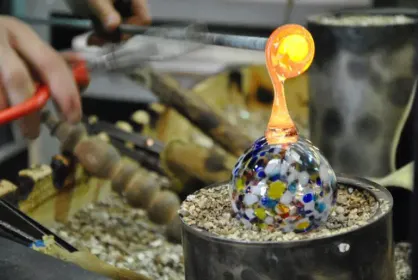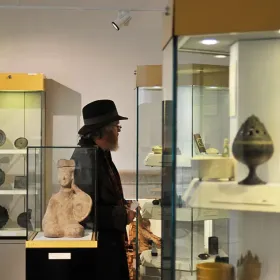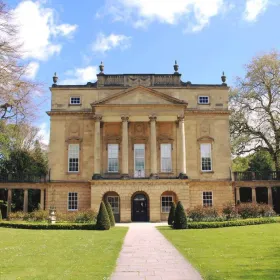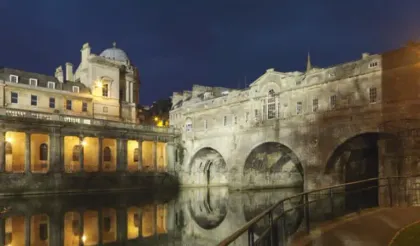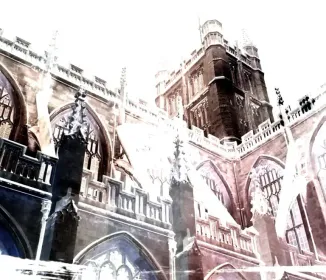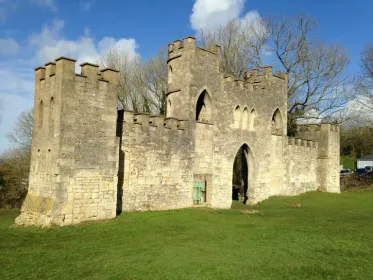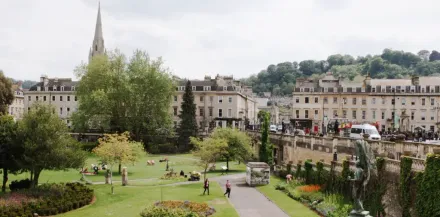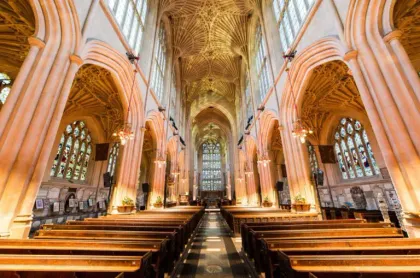
Bath has a long and interesting architectural history that dates back to the Roman era when the city was known as Aquae Sulis. The Romans built a thermal spa that was the largest in the country and is still in use today. After the departure of the Romans, the city fell into decline until the Middle Ages when it became an important religious centre. During this time, many churches and monasteries were built, some of which still stand today.
However, it was during the Georgian era that Bath really came into its own architecturally. The city was transformed into a fashionable spa town, attracting wealthy visitors from across the country. This led to a building boom, with many elegant townhouses, crescents and squares being constructed. The most famous examples of this Georgian architecture are the Royal Crescent, the Circus, and Pulteney Bridge.
The Royal Crescent is perhaps the most iconic example of Georgian architecture in Bath. This semi-circular row of terraced houses was designed by John Wood the Younger and built between 1767 and 1775. The Crescent is made up of 30 houses, each with three storeys and a basement, and is a prime example of the elegant and symmetrical style of Georgian architecture. The crescent overlooks the Royal Victoria Park and has stunning views over the city.
Another must-see attraction in Bath is the Pulteney Bridge, built in 1774, the bridge is lined with shops and cafes, making it a popular spot for locals and tourists alike, and is one of only four bridges in the world that have shops built into them. Pulteney Bridge spans the River Avon and connects Bath with the suburb of Widcombe.
Bath also has several other notable buildings that showcase different architectural styles. The Abbey Church of Saint Peter and Saint Paul is a fine example of Gothic architecture and dates back to the 15th century. The church has beautiful stained glass windows and intricate stonework, making it a popular attraction for visitors to Bath.
The Pump Room was built in the 18th century and was used as a meeting place for visitors to the spa, and is a beautiful example of neo-classical architecture. The interior of the Pump Room is adorned with beautiful chandeliers, mirrors and paintings, making it a popular venue for concerts and events.
Bath offers a wide range of fun activities for locals and tourists alike.
- Visit the Roman Baths: The Roman Baths are one of the most popular tourist attractions in Bath. Visitors can explore the ancient ruins and learn about the history of the Roman Empire in Britain.
- Explore the Bath Abbey: Bath Abbey is a stunning example of Gothic architecture and is one of the city’s most iconic landmarks. Visitors can take a tour of the abbey and climb to the top of the tower for panoramic views of the city.
- Walk the Royal Crescent: The Royal Crescent is a row of 30 Georgian townhouses that were built in the late 18th century. The crescent offers stunning views of the city and is a popular spot for photography.
- Relax in the Thermae Bath Spa: The Thermae Bath Spa is a modern spa that is fed by the natural hot springs that run beneath the city. Visitors can enjoy a range of spa treatments, including massages and facials, as well as access to the rooftop pool with views of the city.
- Take a stroll through Prior Park Landscape Garden: Prior Park Landscape Garden is a stunning 18th-century garden that features a Palladian bridge, cascading lakes, and sweeping views of the city. Visitors can take a leisurely stroll through the gardens and enjoy a picnic on the lawns.
- Shop at the Bath Christmas Market: The Bath Christmas Market is held annually and is a popular destination for holiday shopping. Visitors can browse a variety of stalls selling handmade crafts, gifts, and festive foods.
- Visit the Jane Austen Centre: Jane Austen lived in Bath for several years, and the city has a museum dedicated to her life and works. Visitors can learn about the author and her connection to the city through exhibits and guided tours.
These are just a few of the many fun things to do in Bath. With its rich history, stunning architecture, and vibrant culture, Bath is a must-visit destination for anyone traveling to England.
